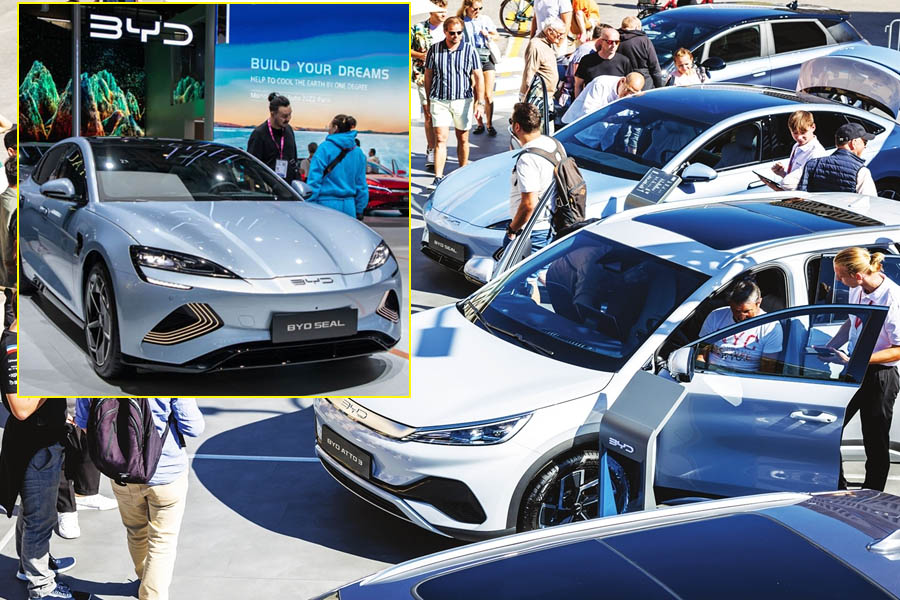
The European Union (EU) has taken a significant step in safeguarding its electric vehicle (EV) sector by initiating a 13-month anti-subsidy investigation into Chinese EV manufacturers. This inquiry could potentially lead to the imposition of punitive tariffs on Chinese EV products entering the European market. The move reflects concerns voiced by French President Emmanuel Macron earlier this year, emphasizing the need to protect Europe's EV sector from a similar takeover as seen in the solar panel industry, where China now dominates 80% of the global market.
Impact on Chinese EV Manufacturers
The investigation, launched on September 13, raises questions about the future of Chinese EV makers in Europe. If punitive tariffs are imposed following the investigation, these companies may need to restructure their supply chains and export strategies. Chinese EV manufacturers and parts suppliers will likely have to fine-tune their supply chains and export routes to circumvent potential tariff hikes in Europe. It's important to note that the maximum investigation period for an EU anti-subsidy case is 13 months, with the possibility of an earlier conclusion. Consequently, there is limited time for Chinese EV manufacturers to optimize their supply chains.
Challenges Ahead for Chinese EV Makers
The Beijing-based Zhong Lun Law Firm has cautioned that once the EU completes its investigation and imposes anti-subsidy tariffs, Chinese EV makers may face substantial pressure. Presently, tariffs on Chinese EVs in Europe stand at 10%, while the United States imposes a higher tariff of 27.5%. Chinese EV makers have made significant inroads into the European market, selling 820,000 vehicles in the first seven months of this year, a 55% increase from the same period in 2022. Their market share in Europe has risen from 6% in 2021 to 13% in 2023, with projections suggesting it could reach 15% by 2025.
In the fully-electric vehicle market, Chinese manufacturers have seen their market share grow from 4% in 2021 to 8% in 2023. Projections estimate that by 2030, this share could expand further, reaching between 12.5% and 20%, with annual sales ranging from 725,000 to 1.16 million fully-electric vehicles.
European Response and Concerns
Both France and Germany have welcomed the EU's decision to investigate Chinese electric cars for subsidies. French Minister for Europe Laurence Boone emphasized the need to prevent the European market from being flooded by heavily subsidized EVs, similar to what occurred in the solar panel industry. German Economy Minister Robert Habeck highlighted the importance of ensuring fair competition and addressing any breaches of free competition rules.
The Chinese Commerce Ministry has countered the investigation, describing it as an act of protectionism that could disrupt and distort the global automotive industry chain. It emphasized that China's EV industry's success is attributed to innovation and a complete industrial supply chain.
Global EV Landscape
The global electric vehicle market continues to expand rapidly. In 2022, new EV sales exceeded 10 million units and are expected to grow to approximately 14 million units in 2023, according to the International Energy Agency (IEA). The share of electric cars among all new vehicles sold worldwide rose to 14% in 2022, a significant increase from 9% in 2021 and less than 5% in 2020. China currently accounts for approximately 58% of all electric cars on the road globally.
While Chinese EV makers face uncertainties in the European market due to the anti-subsidy investigation, they also encounter domestic challenges. Domestic demand for EVs in China has started to slow, and external demand may have peaked. This presents an opportunity for Chinese manufacturers to reevaluate their strategies and explore new markets. The EU's anti-subsidy investigation into Chinese EV manufacturers is a significant development in the global EV landscape. It underscores the EU's commitment to protecting its domestic EV sector while potentially disrupting the expansion plans of Chinese EV makers. The outcome of this investigation will have far-reaching implications for the future of electric vehicles in Europe and the competitive dynamics of the global automotive industry.